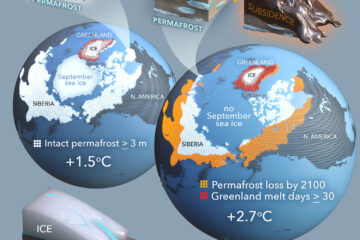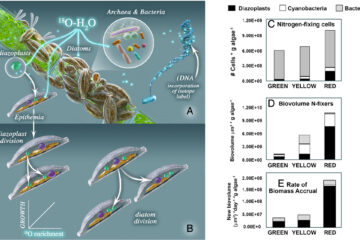Root biomass and nutrient dynamics in a scrub-oak ecosystem under the influence of elevated atmospheric CO2
Elevated CO2 can increase fine root biomass but responses of fine roots to exposure to increased CO2 over many years are infrequently reported. We investigated the effect of elevated CO2 on root biomass and N and P pools of a scrub-oak ecosystem on Merritt Island in Florida, USA, after 7 years of CO2 treatment. Roots were removed from 1-m deep soil cores in 10-cm increments, sorted into different categories (<0.25 mm, 0.25–1 mm, 1–2 mm, 2 mm to 1 cm, >1 cm, dead roots, and organic matter), weighed, and analyzed for N, P and C concentrations. With the exception of surface roots <0.25 mm diameter, there was no effect of elevated CO2 on root biomass. There was little effect on C, N, or P concentration or content with the exception of dead roots, and <0.25 mm and 1–2 mm diameter live roots at the surface. Thus, fine root mass and element content appear to be relatively insensitive to elevated CO2. In the top 10 cm of soil, biomass of roots with a diameter of <0.25 mm was depressed by elevated CO2. Elevated CO2 tended to decrease the mass and N content of dead roots compared to ambient CO2. A decreased N concentration of roots <0.25 mm and 1–2 mm in diameter under elevated CO2 may indicate reduced N supply in the elevated CO2 treatment. Our study indicated that elevated CO2 does not increase fine root biomass or the pool of C in fine roots. In fact, elevated CO2 tends to reduce biomass and C content of the most responsive root fraction (<0.25 mm roots), a finding that may have more general implications for understanding C input into the soil at higher atmospheric CO2 concentrations.


